 Image 1 of 12
Image 1 of 12

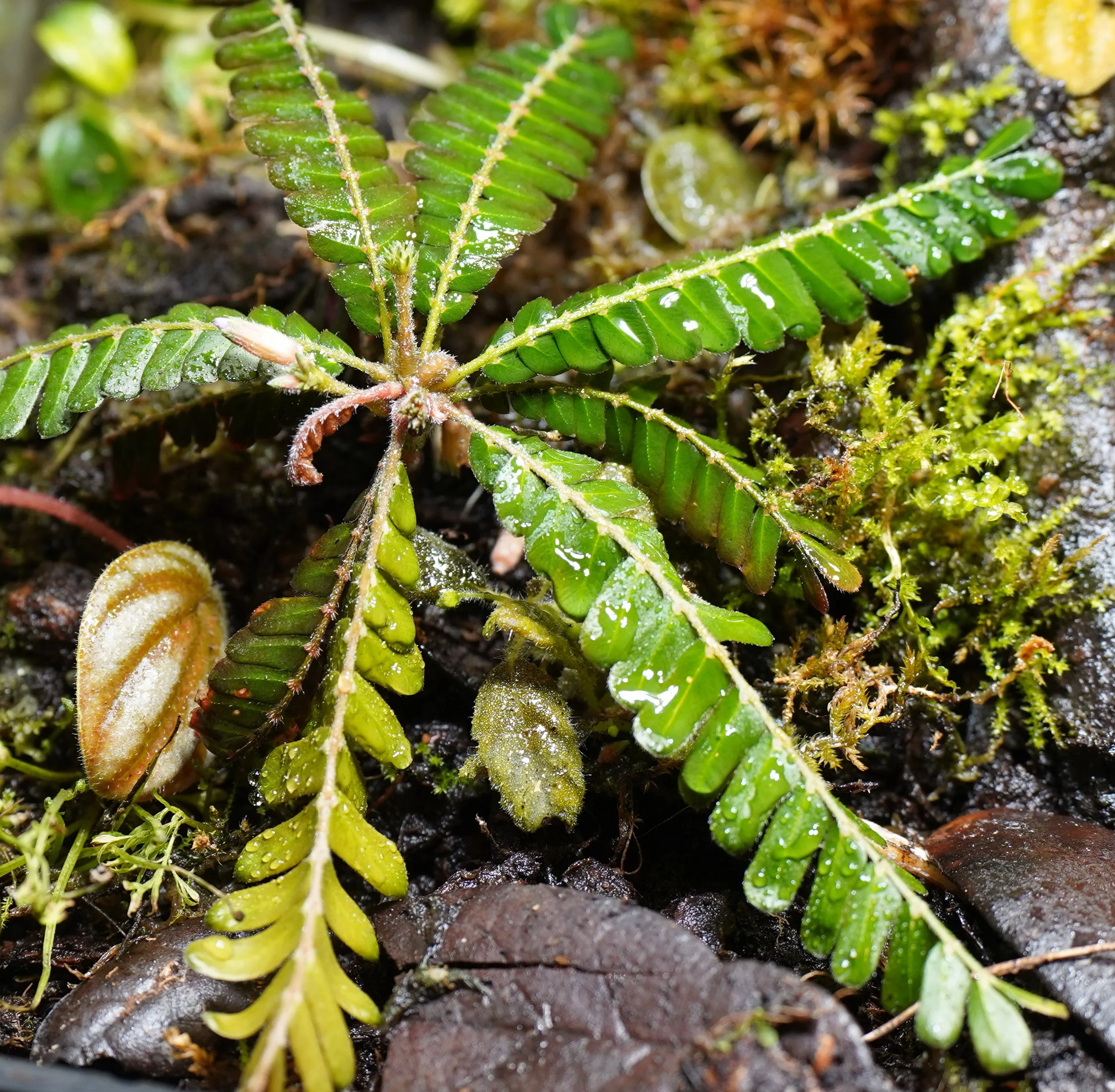 Image 2 of 12
Image 2 of 12

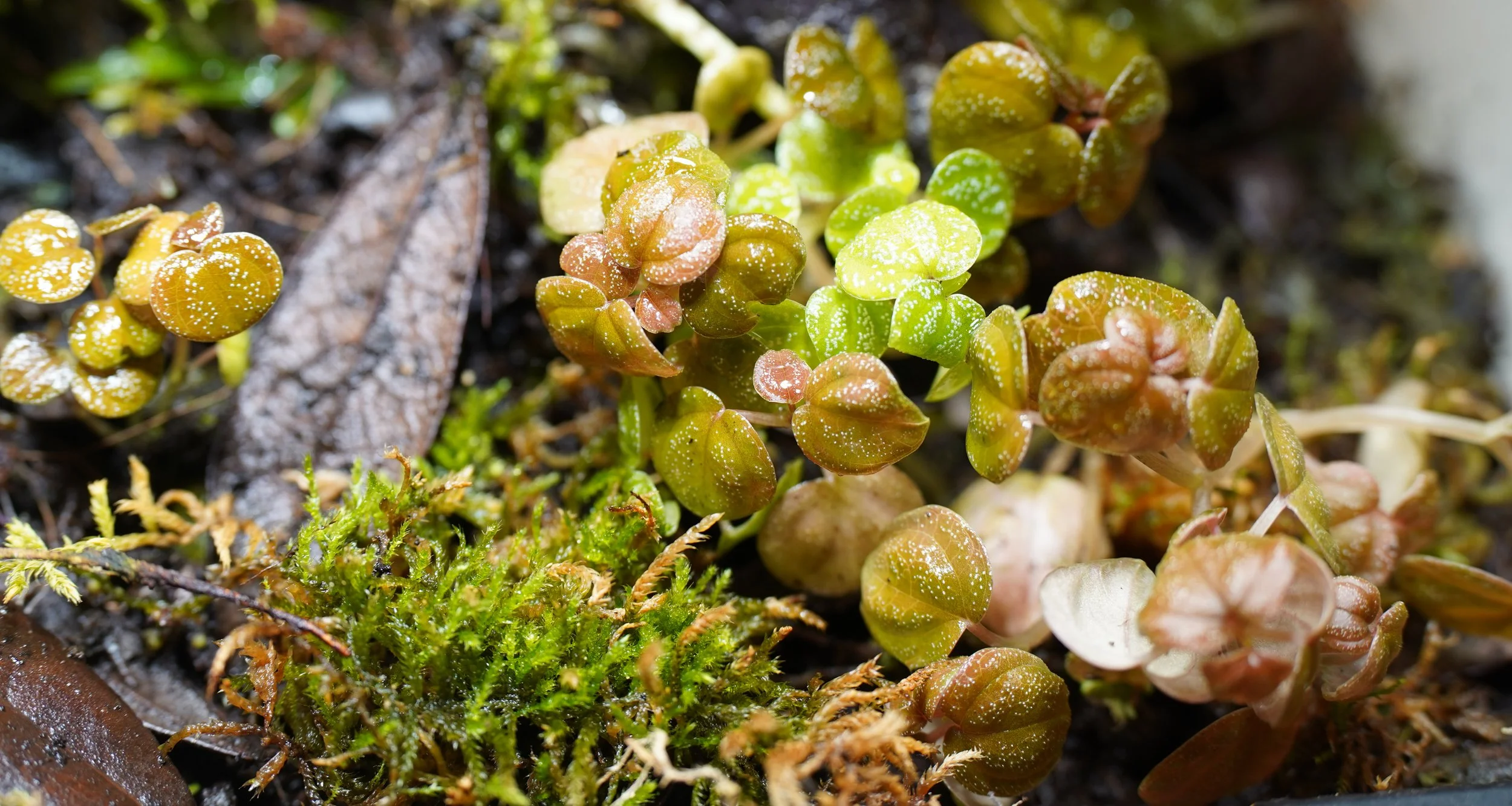 Image 3 of 12
Image 3 of 12

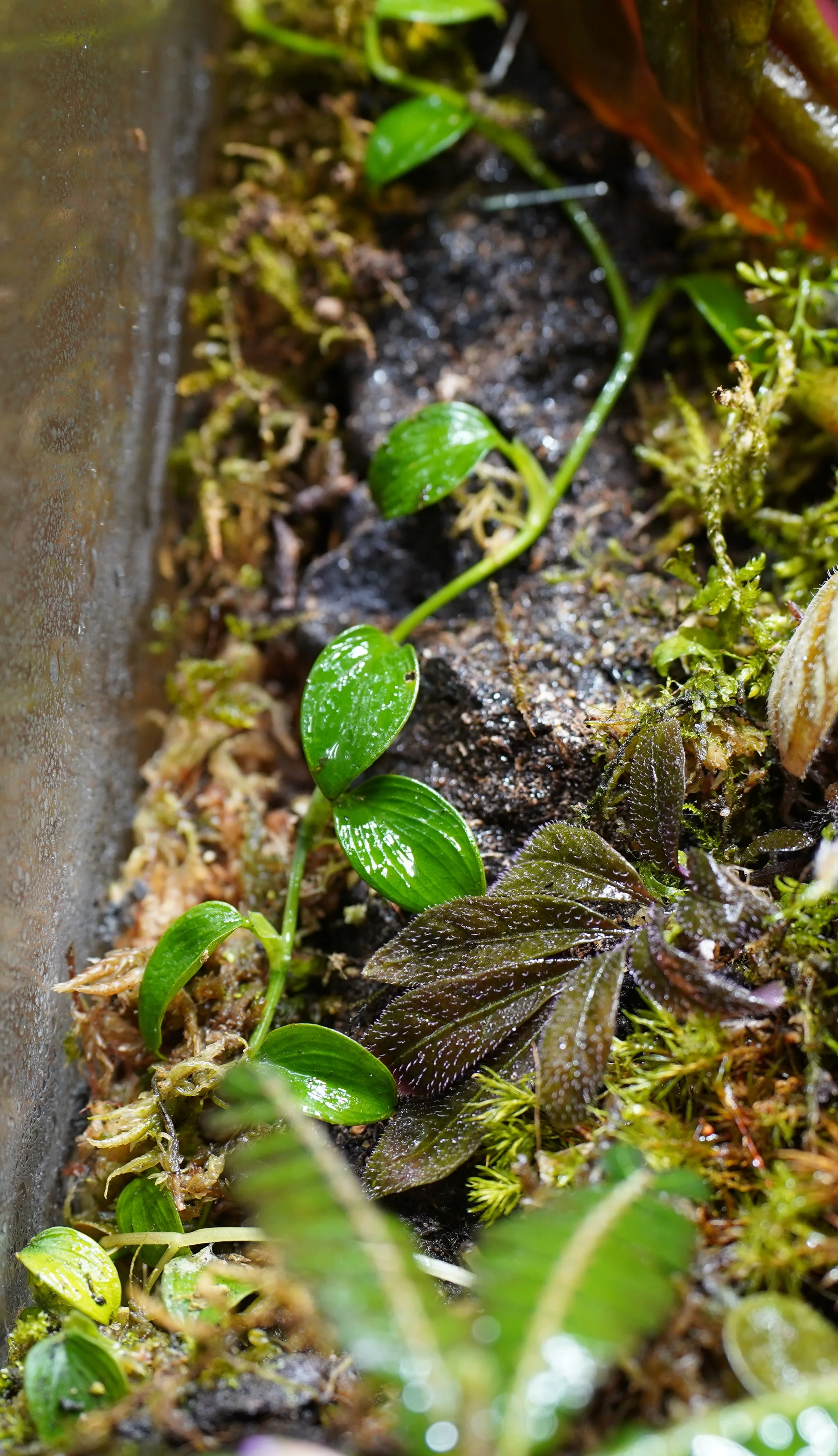 Image 4 of 12
Image 4 of 12

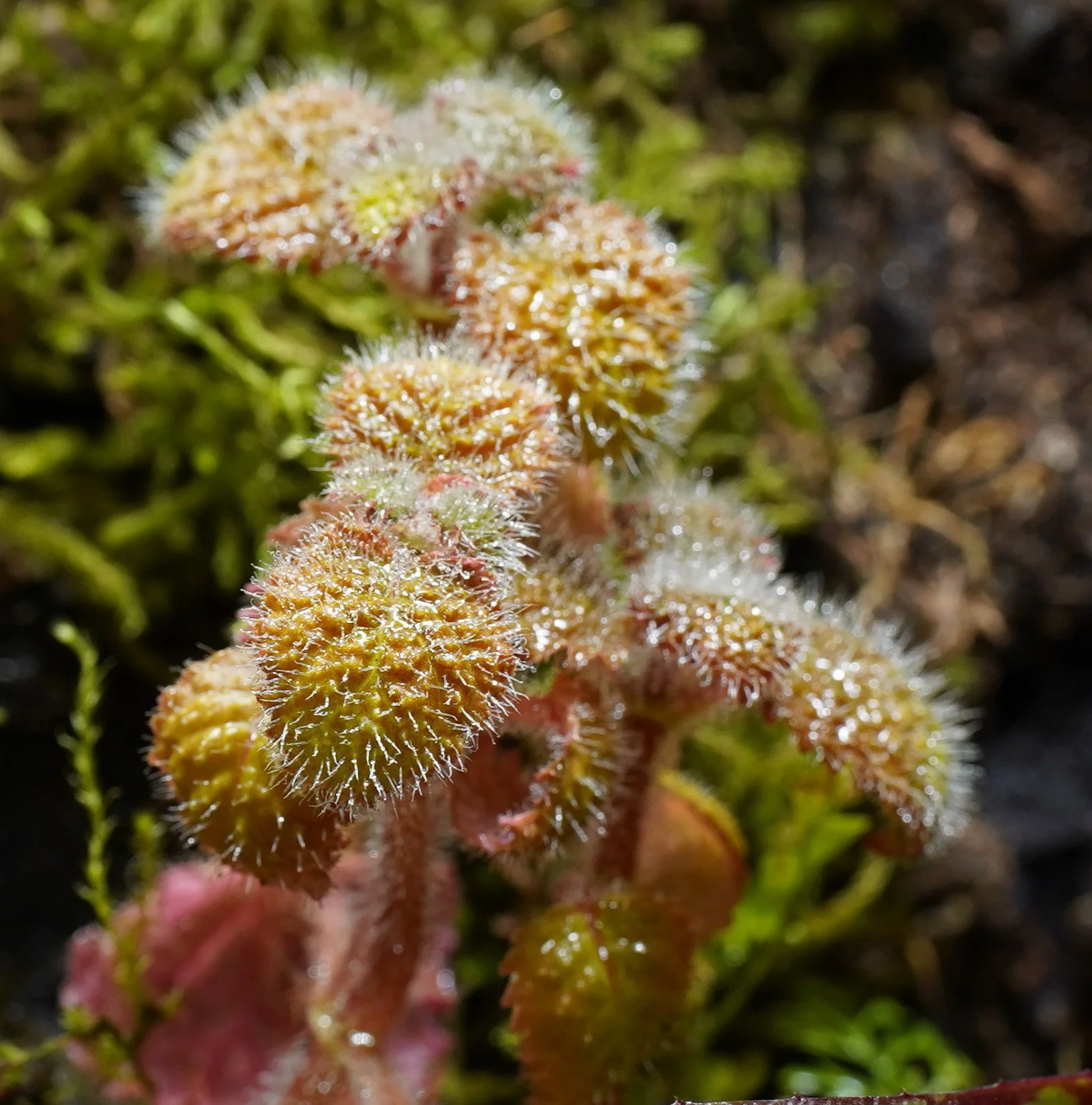 Image 5 of 12
Image 5 of 12

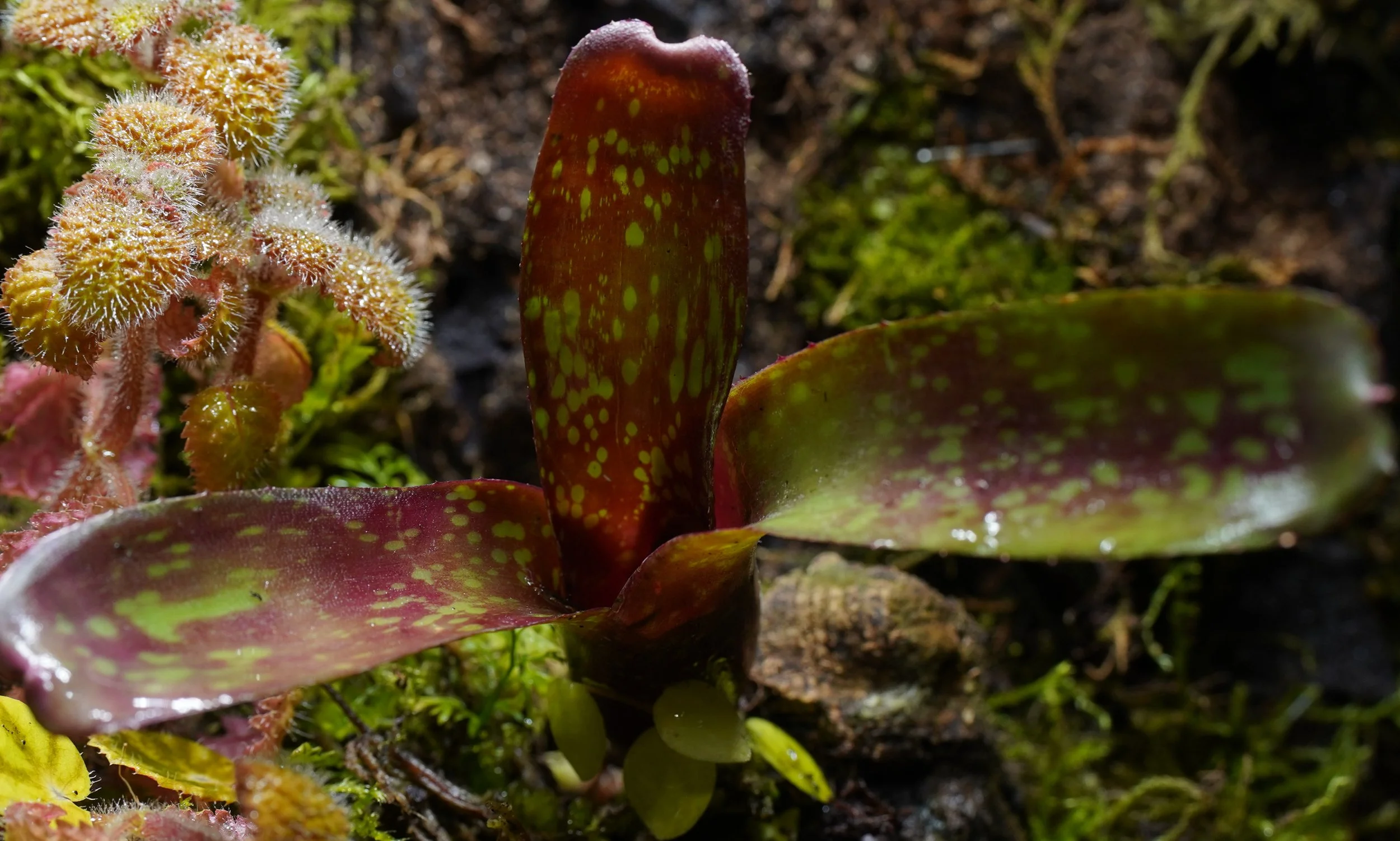 Image 6 of 12
Image 6 of 12

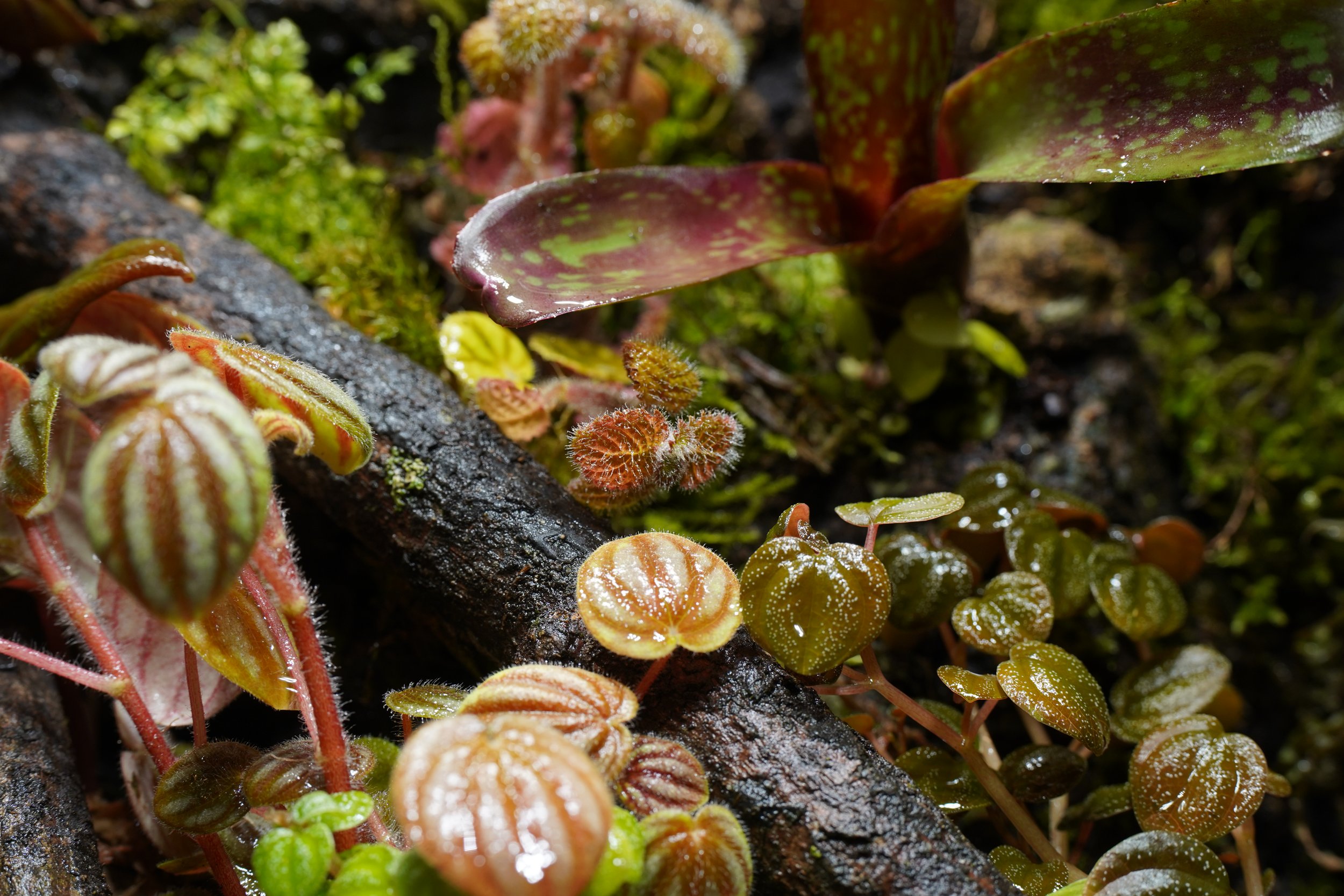 Image 7 of 12
Image 7 of 12

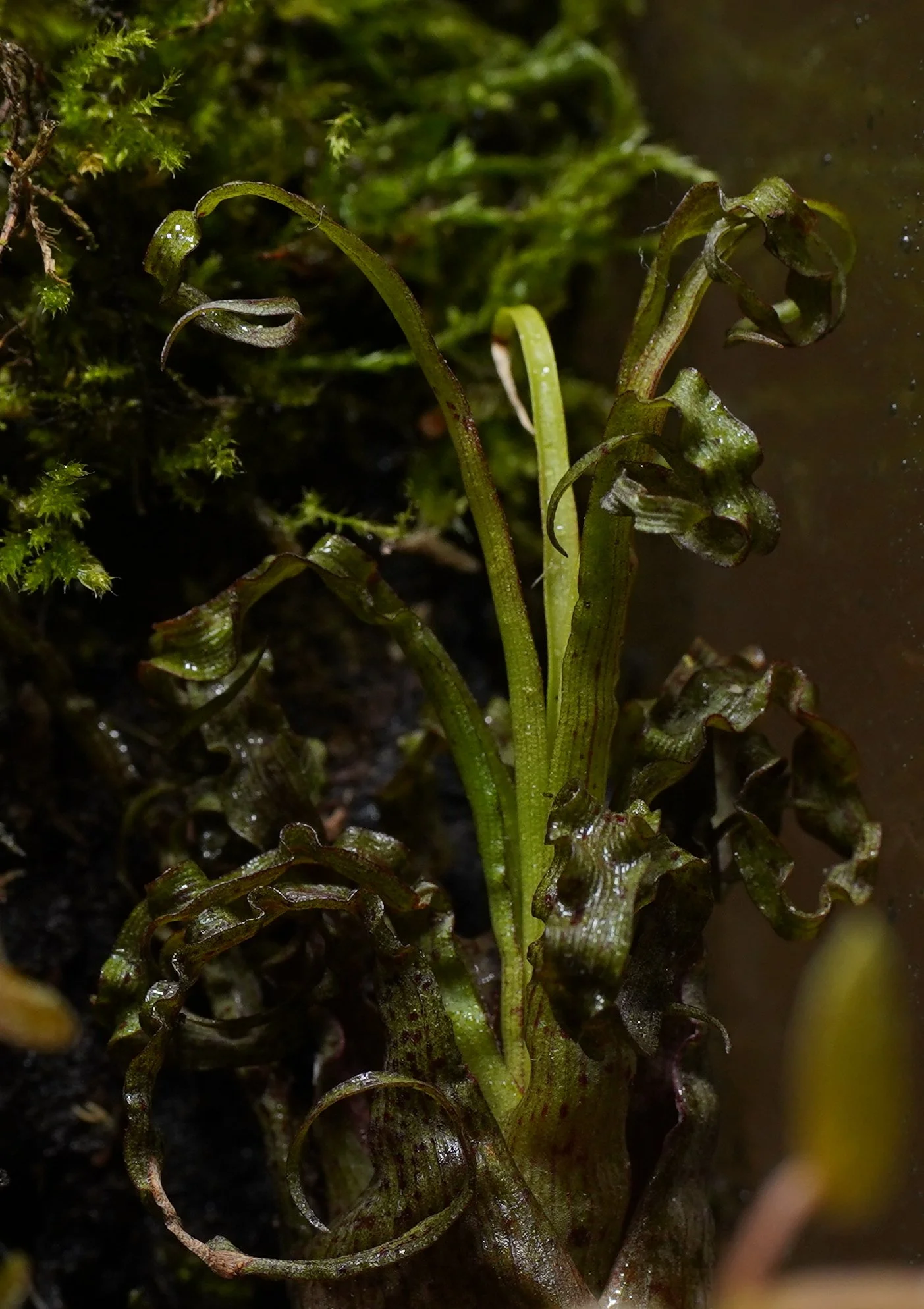 Image 8 of 12
Image 8 of 12

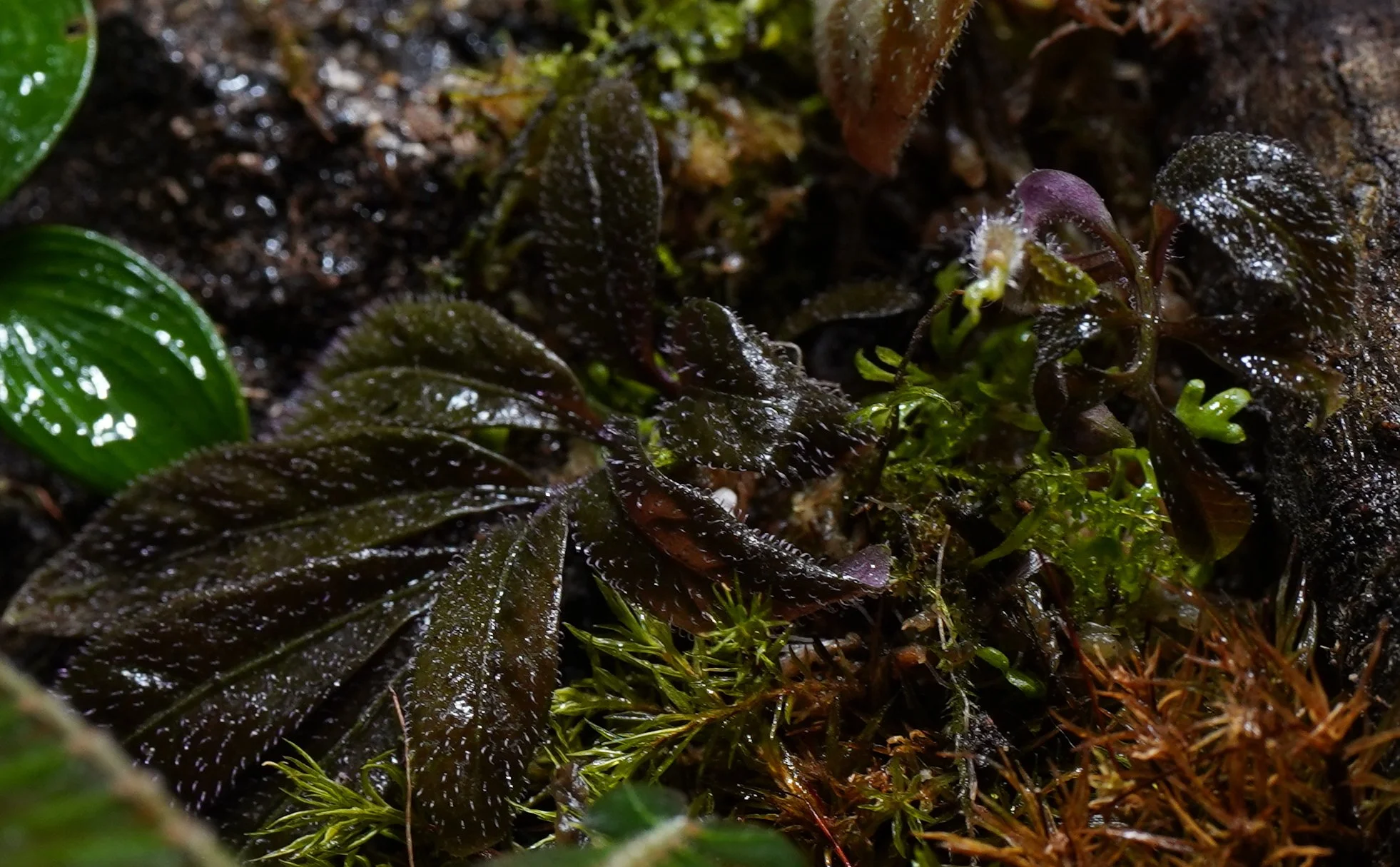 Image 9 of 12
Image 9 of 12

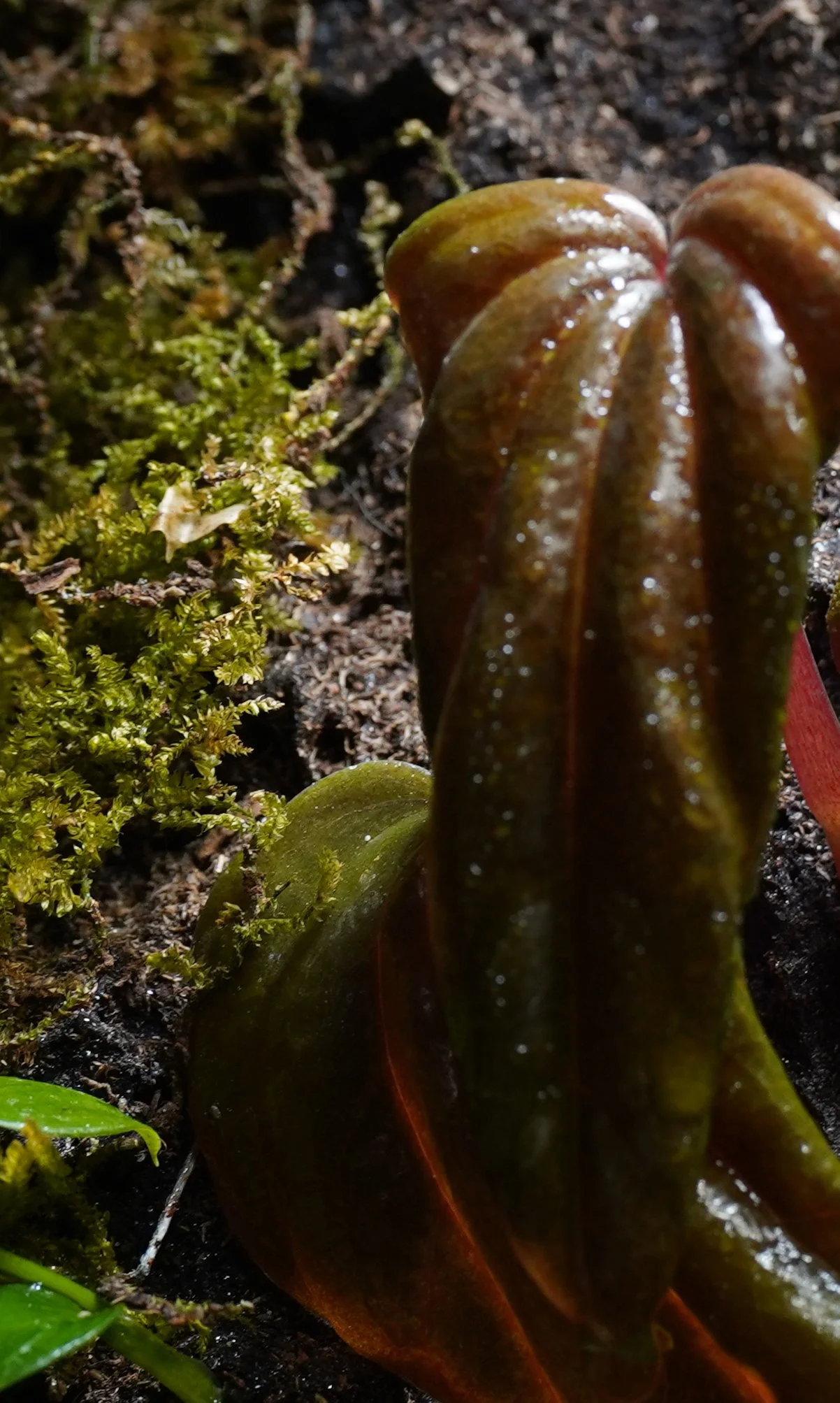 Image 10 of 12
Image 10 of 12

 Image 11 of 12
Image 11 of 12

 Image 12 of 12
Image 12 of 12













Terrarium - S1001
Raphidophora pachyphylla Malaysia : Rhaphidophora pachyphylla is a small shingling species from New Guinea. It is quite an aggressive shingler, and is interesting due to the fact that it will grow downward after reaching the top of a vivarium. It adheres to backgrounds quite well, and makes for a nice addition to any vivarium. These Rhaphidophora do well in moderate, indirect light and high humidity.
Begonia ocellata : Native to West Sumatra, this fuzzy-leaved species has at least two distinct forms. One is greenish-purple and spotless, the other is blueish pink with small white polka dots. Each polka dot has a single hair in the middle. Stems are a red and covered in small pink hairs. A trailing species, it will readily branch out in a somewhat angular fashion from the main plant to make a small colony. The epithet of ocellata comes from the array of spots, similar to the pattern of a freshwater ocellate stingray.
Neoregelia Royal Burgundy x fireball : Neoregelia bromeliads are vibrant, hardy medium-sized epiphytes from rainforest canopies, typically growing 8–12″ (20–30 cm). Ideal for humid terrariums or vivariums, they are safe for most amphibians and tropical reptiles.
Racinaea crispa : A small plant (to 6 inches) with a bulbous base and leaves which have endless twists, wrinkles and curls. Green with darker markings, sometimes almost appearing black, with a delicate yellow inflorescence.
Solanum uleanum : Solanum uleanum is a tropical vine native to the rainforests of Brazil, Peru, Colombia, and Ecuador. It is part of the Solanaceae family, which includes a variety of well-known plants, such as tomatoes and nightshades. This species is especially notable for its visually striking foliage. The young leaves of Solanum uleanum emerge in a vivid, almost neon purple, gradually maturing into deep green.
Peperomia sp. Dark Pongo : Peperomia sp. Dark Pongo is a modest-sized terrestrial species from the Yurimaguas lowlands of Peru. Our founding stock originated from a now razed patch of forest that stood near Pongo De Caynarachi. This species grows intermittently throughout the region. It is hard to detect with its dark foliage offering little contrast against the forest floor in the deep shade we most often have found it growing in.
Marcgravia aff. umbellata : Marcgravia aff umbellata is a species native to the Caribbean. This Marcgravia has a beautiful muted white markings and small, shiny green leaves that offer a beautiful, compact look. These vines appreciate lower light while rooting, and will display high levels of phototropism.
Raphidophora pachyphylla Malaysia : Rhaphidophora pachyphylla is a small shingling species from New Guinea. It is quite an aggressive shingler, and is interesting due to the fact that it will grow downward after reaching the top of a vivarium. It adheres to backgrounds quite well, and makes for a nice addition to any vivarium. These Rhaphidophora do well in moderate, indirect light and high humidity.
Begonia ocellata : Native to West Sumatra, this fuzzy-leaved species has at least two distinct forms. One is greenish-purple and spotless, the other is blueish pink with small white polka dots. Each polka dot has a single hair in the middle. Stems are a red and covered in small pink hairs. A trailing species, it will readily branch out in a somewhat angular fashion from the main plant to make a small colony. The epithet of ocellata comes from the array of spots, similar to the pattern of a freshwater ocellate stingray.
Neoregelia Royal Burgundy x fireball : Neoregelia bromeliads are vibrant, hardy medium-sized epiphytes from rainforest canopies, typically growing 8–12″ (20–30 cm). Ideal for humid terrariums or vivariums, they are safe for most amphibians and tropical reptiles.
Racinaea crispa : A small plant (to 6 inches) with a bulbous base and leaves which have endless twists, wrinkles and curls. Green with darker markings, sometimes almost appearing black, with a delicate yellow inflorescence.
Solanum uleanum : Solanum uleanum is a tropical vine native to the rainforests of Brazil, Peru, Colombia, and Ecuador. It is part of the Solanaceae family, which includes a variety of well-known plants, such as tomatoes and nightshades. This species is especially notable for its visually striking foliage. The young leaves of Solanum uleanum emerge in a vivid, almost neon purple, gradually maturing into deep green.
Peperomia sp. Dark Pongo : Peperomia sp. Dark Pongo is a modest-sized terrestrial species from the Yurimaguas lowlands of Peru. Our founding stock originated from a now razed patch of forest that stood near Pongo De Caynarachi. This species grows intermittently throughout the region. It is hard to detect with its dark foliage offering little contrast against the forest floor in the deep shade we most often have found it growing in.
Marcgravia aff. umbellata : Marcgravia aff umbellata is a species native to the Caribbean. This Marcgravia has a beautiful muted white markings and small, shiny green leaves that offer a beautiful, compact look. These vines appreciate lower light while rooting, and will display high levels of phototropism.

